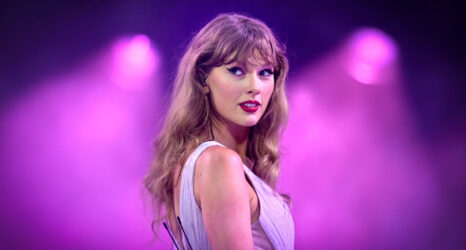“The first time I met Elizabeth Warren, she had just come home from a walk with her husband and her dog at Fresh Pond, the reservoir near her house in Cambridge, Mass. It was a sunny day in February, a couple of weeks after Warren announced her candidacy for president, and she was wearing a navy North Face jacket and black sneakers with, as usual, rimless glasses and small gold earrings. Her hair had drifted a bit out of place.“
The New York Times‘ recent piece on Democratic presidential hopeful Elizabeth Warren began—I’m talking the first paragraph here—with the same damn gender stereotypes that have long plagued women politicians. These stereotypical trappings position women within the family, and as people to be seen, or looked at, rather than heard.
I shouldn’t be surprised. But I sort of am. I’m certainly disappointed. Again.

The article illustrated what is wrong with much of the media coverage of women politicians in just the first three paragraphs. It invoked stereotypes. It reminded us of Warren’s gender before her politics.
It’s typical for news organizations to write stories about women politicians that lead with information about their families, situating them as occupying the “traditional” role of women. For added measure, reporters will remind us, too, that they are heterosexual. Then there’s that second sentence of the article that describes what Warren is wearing—such a cliché for those of us who study women, politics and media. To round out the images of family and fashion, in the third paragraph—after a second mostly about the family dog—the Times offers up an image of Warren in the kitchen.
And it’s not just Warren who is suffering: Already there has been much media discussion about the personal relationship between former San Francisco mayor Willie Brown and Democratic contender Kamala Harris, asking readers to consider that Harris may have slept her way to the top; recently, we even saw media discussion centered around presidential hopeful Kirsten Gillibrand eating fried chicken. Off the campaign trail, there is no shortage of discussion about the appearances and stylistic decisions made by U.S. Representative Alexandria Ocasio-Cortez and other young women in Congress.
This trifecta of family, fashion and food succeeds in conjuring the most stereotypical images about women—that their place is in the home, caring for family, and that how they look is important.
Years of research, not just in the U.S. but in other parts of the world, shows how women politicians are treated differently from their male counterparts by news media—often assessed for their appearance and clothing and, more often than male politicians, associated with their familial and home status. Male politicians, conversely, are more often talked about in terms of their political achievements, and masculine qualities associated with power.
This is really important, because these are the aspects of political life voters consider important. Masculine traits are the same traits people expect in a leader. When media outlets treat women politicians as women first, and politicians second, they are feeding into an already sexist culture where many voters believe that men make better politicians than women. A new poll found 20 percent of Democratic and independent men responding to a survey agreed with the statement that women are “less effective in politics than men.”
Journalists writing about women politicians can and should do better. Women running for and already in office need to be treated like candidates and politicians, not like women candidates and women politicians. Reminding audiences of women’s place in the home, and family, rather than the world of politics, does little to help break culturally-steeped ideas about women, politics and power.
When a woman is running for president and a major newspaper highlights that woman’s marital status in the first sentence, it is neglecting to place her politics, her platform and record, at the forefront. It’s bad reporting, and it’s bad for the country.





